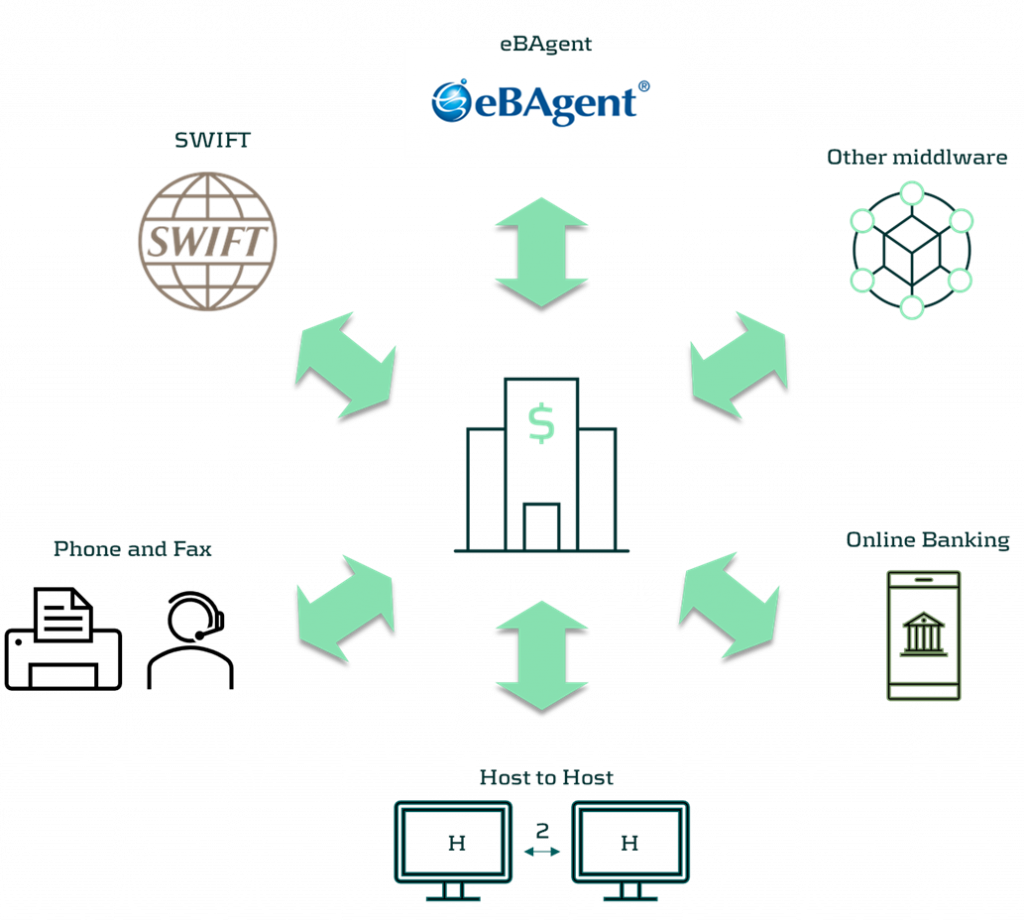Blockchain-based Tokenization for decentralized Issuance and Exchange of Carbon Offsets

Current carbon offset processes are opaque and rely on centralized players; blockchain technology can provide improvements by assuring transparency and decentralization.
Carbon offset processes are currently dominated by private actors providing legitimacy for the market. The two largest of these, Verra and Gold Standard, provide auditing services, carbon registries and a marketplace to sell carbon offsets, making them ubiquitous in the whole process. Due to this opacity and centralisation, the business models of the existing companies was criticised regarding its validity and the actual benefit for climate action. By buying an offset in the traditional manner, the buyer must place trust in these players and their business models. Alternative solutions that would enhance the transparency of the process as well as provide decentralised marketplaces are thus called for.
The conventional process
Carbon offsets are certificates or credits that represent a reduction or removal of greenhouse gas emissions from the atmosphere. Offset markets work by having companies and organizations voluntarily pay for carbon offsetting projects. Reasons for partaking in voluntary carbon markets vary from increased awareness of corporate responsibility to a belief that emissions legislation is inevitable, and it is thus better to partake earlier.
Some industries also suffer prohibitively expensive barriers for lowering their emissions, or simply can’t reduce them because of the nature of their business. These industries can instead benefit from carbon offsets, as they manage to lower overall carbon emissions while still staying in business. Environmental organisations run climate-friendly projects and offer certificate-based investments for companies or individuals who therefore can reduce their own carbon footprint. By purchasing such certificates, they invest in these projects and their actual or future reduction of emissions. However, on a global scale, it is not enough to simply lower our carbon footprint to negate the effects of climate change. Emissions would in practice have to be negative, so that even a target of 1,5-degree Celsius warming could be met. This is also remedied by carbon credits, as they offer us a chance of removing carbon from the atmosphere. In the current process, companies looking to take part in the offsetting market will at some point run into the aforementioned behemoths and therefore an opaque form of purchasing carbon offsets.
The blockchain approach
A blockchain is a secure and decentralised database or ledger which is shared among the nodes of a computer network. Therefore, this technology can offer a valid contribution addressing the opacity and centralisation of the traditional procedure. The intention of the first blockchain approaches were the distribution of digital information in a shared ledger that is agreed on jointly and updated in a transparent manner. The information is recorded in blocks and added to the chain irreversibly, thus preventing the alteration, deletion and irregular inclusion of data.
In the recent years, tokenization of (physical) assets and the creation of a digital version that is stored on the blockchain gained more interest. By utilizing blockchain technology, asset ownership can be tokenized, which enables fractional ownership, reduces intermediaries, and provides a secure and transparent ledger. This not only increases liquidity but also expands access to previously illiquid assets (like carbon offsets). The blockchain ledger allows for real-time settlement of transactions, increasing efficiency and reducing the risk of fraud. Additionally, tokens can be programmed to include certain rules and restrictions, such as limiting the number of tokens that can be issued or specifying how they can be traded, which can provide greater transparency and control over the asset.
Blockchain-based carbon offset process
The tokenisation process for carbon credits begins with the identification of a project that either captures or helps to avoid carbon creation. In this example, the focus is on carbon avoidance through solar panels. The generation of solar electricity is considered an offset, as alternative energy use would emit carbon dioxide, whereas solar power does not.
The solar panels provide information regarding their electricity generation, from which a figure is derived that represents the amount of carbon avoided and fed into a smart contract. A smart contract is a self-executing application that exist on the blockchain and performs actions based on its underlying code. In the blockchain-based carbon offset process, smart contracts convert the different tokens and send them to the owner’s wallet. The tokens used within the process are compliant with the ERC-721 Non-Fungible Token (NFT) standard, which represents a unique token that is distinguishable from others and cannot be exchanged for other units of the same asset. A practical example is a work of art that, even if replicated, is always slightly different.
In the first stage of the process, the owner claims a carbon receipt, based on the amount of carbon avoided by the solar panel. Thereby the aggregated amount of carbon avoided (also stored in a database just for replication purposes) is sent to the smart contract, which issues a carbon receipt of the corresponding figure to the owner. Carbon receipts can further be exchanged for a uniform amount of carbon credits (e.g. 5 kg, 10 kg, 15 kg) by interacting with the second smart contract. Carbon credits are designed to be traded on the decentralised marketplace, where the price is determined by the supply and demand of its participants. Ultimately, carbon credits can be exchanged for carbon certificates indicating the certificate owner and the amount of carbon offset. Comparable with a university diploma, carbon certificates are tied to the address of the owner that initiated the exchange and are therefore non-tradable. Figure 1 illustrates the process of the described blockchain-based carbon offset solution:

Figure 1: Process flow of a blockchain-based carbon offset solution
Conclusion
The outlined blockchain-based carbon offset process was developed by Zanders’ blockchain team in a proof of concept. It was designed as an approach to reduce dependence on central players and a transparent method of issuing carbon credits. The smart contracts that the platform interacts with are implemented on the Mumbai test network of the public Polygon blockchain, which allows for fast transaction processing and minimal fees. The PoC is up and running, tokenizing the carbon savings generated by one of our colleagues photovoltaic system, and can be showcased in a demo. However, there are some clear optimisations to the process that should be considered for a larger scale (commercial) setup.
If you're interested in exploring the concept and benefits of a blockchain-based carbon offset process involving decentralised issuance and exchange of digital assets, or if you would like to see a demo, you can contact Robert Richter or Justus Schleicher.
The 2023 Banking Turmoil

Current carbon offset processes are opaque and rely on centralized players; blockchain technology can provide improvements by assuring transparency and decentralization.
Early October, the Basel Committee on Banking Supervision (BCBS) published a report[1] on the 2023 banking turmoil that involved the failure of several US banks as well as Credit Suisse. The report draws lessons for banking regulation and supervision which may ultimately lead to changes in banking regulation as well as supervisory practices. In this article we summarize the main findings of the report[2]. Based on the report’s assessment, the most material consequences for banks, in our view, could be in the following areas:
- Reparameterization of the LCR calculation and/or introduction of additional liquidity metrics
- Inclusion of assets accounted for at amortized cost at their fair value in the determination of regulatory capital
- Implementation of extended disclosure requirements for a bank's interest rate exposure and liquidity position
- More intensive supervision of smaller banks, especially those experiencing fast growth and concentration in specific client segments
- Application of the full Basel III Accord and the Basel IRRBB framework to a larger group of banks
Bank failures and underlying causes
The BCBS report first describes in some detail the events that led to the failure of each of the following banks in the spring of 2023:
- Silicon Valley Bank (SVB)
- Signature Bank of New York (SBNY)
- First Republic Bank (FRB)
- Credit Suisse (CS)
While each failure involved various bank-specific factors, the BCBS report highlights common features (with the relevant banks indicated in brackets).
- Long-term unsustainable business models (all), in part due to remuneration incentives for short-term profits
- Governance and risk management did not keep up with fast growth in recent years (SVB, SBNY, FRC)
- Ineffective oversight of risks by the board and management (all)
- Overreliance on uninsured customer deposits, which are more likely to be withdrawn in a stress situation (SVB, SBNY, FRC)
- Unprecedented speed of deposit withdrawals through online banking (all)
- Investment of short-term deposits in long-term assets without adequate interest-rate hedges (SVB, FRC)
- Failure to assess whether designated assets qualified as eligible collateral for borrowing at the central bank (SVB, SBNY)
- Client concentration risk in specific sectors and on both asset and liability side of the balance sheet (SVB, SBNY, FRC)
- Too much leniency by supervisors to address supervisory findings (SVB, SBNY, CS)
- Incomplete implementation of the Basel Framework: SVB, SBNY and FRB were not subject to the liquidity coverage ratio (LCR) of the Basel III Accord and the BCBS standard on interest rate risk in the banking book (IRRBB)
Of the four failed banks, only Credit Suisse was subject to the LCR requirements of the Basel III Accord, in relation to which the BCBS report includes the following observations:
- A substantial part of the available high quality liquid assets (HQLA) at CS was needed for purposes other than covering deposit outflows under stress, in contrast to the assumptions made in the LCR calculation
- The bank hesitated to make use of the LCR buffer and to access emergency liquidity so as to avoid negative signalling to the market
Although not part of the BCBS report, these observations could lead to modifications to the LCR regulation in the future.
Lessons for supervision
With respect to supervisory practices, the BCBS report identifies various lessons learned and raises a few questions, divided into four main areas:
1. Bank’s business models
- Importance of forward-looking assessment of a bank’s capital and liquidity adequacy because accounting measures (on which regulatory capital and liquidity measures are based) mostly are not forward-looking in nature
- A focus on a bank’s risk-adjusted profitability
- Proactive engagement with ‘outlier banks’, e.g., banks that experienced fast growth and have concentrated funding sources or exposures
- Consideration of the impact of changes in the external environment, such as market conditions (including interest rates) and regulatory changes (including implementation of Basel III)
2. Bank’s governance and risk management
- Board composition, relevant experience and independent challenge of management
- Independence and empowerment of risk management and internal audit functions
- Establishment of an enterprise-wide risk culture and its embedding in corporate and business processes.
- Senior management remuneration incentives
3.Liquidity supervision
- Do the existing metrics (LCR, NSFR) and supervisory review suffice to identify start of material liquidity outflows?
- Should the monitoring frequency of metrics be increased (e.g., weekly for business as usual and daily or even intra-day in times of stress)?
- Monitoring of concentration risks (clients as well as funding sources)
- Are sources of liquidity transferable within the legal entity structure and freely available in times of stress?
- Testing of contingency funding plans
4. Supervisory judgment
- Supplement rules-based regulation with supervisory judgment in order to intervene pro-actively when identifying risks that could threaten the bank’s safety and soundness. However, the report acknowledges that a supervisor may not be able to enforce (pre-emptive) action as long as an institution satisfies all minimum requirements. This will also depend on local legislative and regulatory frameworks
Lessons for regulation
In addition, the BCBS report identifies various potential enhancement to the design and implementation of bank regulation in four main areas:
1. Liquidity standards
- Consideration of daily operational and intra-day liquidity requirements in the LCR, based on the observation that a material part of the HQLA of CS was used for this purpose but this is not taken into account in the determination of the LCR
- Recalibration of deposit outflows in the calculation of LCR and NSFR, based on the observation that actual outflow rates at the failed banks significantly exceeded assumed outflows in the LCR and NSFR calculations
- Introduction of additional liquidity metrics such as a 5-day forward liquidity position, survival period and/or non-risk based liquidity metrics that do not rely on run-off assumptions (similar to the role of the leverage ratio in the capital framework)
2. IRRBB
- Implementation of the Basel standard on IRRBB, which did not apply to the US banks, could have made the interest rate risk exposures transparent and initiated timely action by management or regulatory intervention.
- More granular disclosure, covering for example positions with and without hedging, contractual maturities of banking book positions and modelling assumptions
3. Definition of regulatory capital
- Reflect unrealised gains and losses on assets that are accounted for at amortised cost (AC) in regulatory capital, analogous to the treatment of assets that are classified as available-for-sale (AFS). This is supported by the observation that unrealised losses on fixed-income assets held at amortised cost, resulting from to the sharp rise in interest rates, was an important driver of the failure of several US banks when these assets were sold to create liquidity and unrealised losses turned into realised losses. The BCBS report includes the following considerations in this respect:
- If AC assets can be repo-ed to create liquidity instead of being sold, then there is no negative impact on the financial statement
- Treating unrealised gains and losses on AC assets in the same way as AFS assets will create additional volatility in earnings and capital
- The determination of HQLA in the LCR regulation requires that assets are measured at no more than market value. However, this does not prevent the negative capital impact described above
- Reconsideration of the role, definition and transparency of additional Tier-1 (AT1) instruments, considering the discussion following the write-off of AT1 instruments as part of the take-over of CS by UBS
4. Application of the Basel framework
- Broadening the application of the full Basel III framework beyond internationally active banks and/or developing complementary approaches to identify risks at domestic banks that could pose a threat to cross-border financial stability. The events in the spring of this year have demonstrated that distress at relatively small banks that are not subject to the (full) Basel III regulation can trigger broader and cross-border systemic concerns and contagion effects.
- Prudent application of the ‘proportionality’ principle to domestic banks, based on the observation that financial distress at such banks can have cross-border financial stability effects
- Harmonization of approaches that aim to ensure that sufficient capital and liquidity is available at individual legal entity level within banking groups
Conclusion
The BCBS report identifies common shortcomings in bank risk management practices and governance at the four banks that failed during the 2023 banking turmoil and summarizes key take-aways for bank supervision and regulation.
The identified shortcomings in bank risk management include gaps in the management of traditional banking risks (interest rate, liquidity and concentration risks), failure to appreciate the interrelation between individual risks, unsustainable business models driven by short-term incentives at the expense of appropriate risk management, poor risk culture, ineffective senior management and board oversight as well as a failure to adequately respond to supervisory feedback and recommendations.
Key take-aways for effective supervision include enforcing prompt action by banks in response to supervisory findings, actively monitoring and assessing potential implications of structural changes to the banking system, and maintaining effective cross-border supervisory cooperation.
Key lessons for regulatory standards include the importance of full and consistent implementation of Basel standards as well as potential enhancements of the Basel III liquidity standards, the regulatory treatment of interest rate risk in the banking book, the treatment of assets that are accounted for at amortised cost within regulatory capital and the role of additional Tier-1 capital instruments.
The BCBS report is intended as a starting point for discussion among banking regulators and supervisors about possible changes to banking regulation and supervisory practices. For those interested in engaging in discussions related to the insights and recommendations in the BCBS report, please feel free to contact Pieter Klaassen.
[1] Report on the 2023 banking turmoil (bis.org) (accessed on October 19, 2023)
[2] Although recognized as relevant in relation to the banking turmoil, the BCBS report explicitly excludes from its consideration the role and design of deposit guarantee schemes, the effectiveness of resolution arrangements, the use and design of central bank lending facilities and FX swap lines, and public support measures in banking crises.
Embracing Risk Management Excellence: An Interview with Zanders’ New Partner, Brecht van den Driessche

Current carbon offset processes are opaque and rely on centralized players; blockchain technology can provide improvements by assuring transparency and decentralization.
Today, we engage in a conversation with Brecht van den Driessche, a new addition to the Zanders team, to explore his motivations for joining Zanders and his vision for the future of risk management.
Q: Why did you choose Zanders?
A: I've been familiar with Zanders for over a decade, and what has consistently impressed me is the professionalism and deep expertise in Risk Management demonstrated by its people. Consultancy is inherently a people-centric business, and the combination of professionalism with an engaging and enjoyable working environment was a key factor in my decision to join the Zanders team.
Q: What are your focus areas and goals for the short term and long term?
A: The landscape of expectations for Risk Managers and their regulators is rapidly evolving. Recent events such as the collapse of Silicon Valley Bank and the takeover of Credit Suisse by UBS have highlighted the critical importance of proper Risk Management. Financial institutions must invest in a centralized risk function and supporting systems to enhance transparency and real-time Risk Management. Worldwide, there is a clear trend among banks to centralize data, improve Risk Management systems, and perform more frequent, granular, and standardized risk calculations and disclosures. Regulators are increasingly pushing banks to move away from spreadsheets and manage their financial risks with professional, often vendor-based systems. As a result, banks are moving away from legacy systems and heavily investing in new Risk Management Systems.
My primary focus is to assist our customers in embracing further digitalization to maximize the benefits of these investments. This includes strategic benchmarking, optimization, selection, and the implementation of fit-for-purpose Risk Management systems. To achieve this, we collaborate closely with a select group of world-leading suppliers of risk technology.
The ultimate goal is for Zanders to become the go-to expert for our clients, providing them with robust Risk Management systems to effectively manage financial risks and make informed decisions.
Q: How were your first weeks at Zanders?
A: Right from day one, I felt the positive energy and warmth that characterizes the Zanders team. Simultaneously, around 20 new colleagues embarked on their Zanders journeys across Europe, and the onboarding process was exceptionally smooth. I've already had the pleasure of meeting many colleagues, clients, and partners, and I am genuinely convinced that my decision to join Zanders was the perfect career move.
Q: Anything you want to share with the outside world about this career move?
A: If you're curious about our ambitions and how we can help you achieve yours, don't hesitate to reach out. Drop me a message, and let's connect.
In a world of ever-evolving risks and escalating expectations in risk management, Zanders plays a pivotal role in helping organizations navigate these challenges, propelling them toward success. With our unwavering focus on professionalism, expertise, and a commitment to embracing digitalization, we stand as a trusted partner for those in the finance industry. To learn more about us, please visit our About Zanders page.
How to manage SWIFT MT/MX Migration in SAP

Current carbon offset processes are opaque and rely on centralized players; blockchain technology can provide improvements by assuring transparency and decentralization.
SWIFT now supports the exchange of ISO 20022 XML or MX message via the so-called FINplus network. In parallel, the legacy MT format messages remain to be exchanged over the ‘regular’ FIN network; The MT flow for message categories 1 (customer payments), 2 (FI transfers) and 9 (statements) through the FIN network will be decommissioned per November 2025.
As such, between March 2023 and November 2025, financial institutions need to be able to receive and process MX messages through FINplus on the inbound side, and optionally send MX messages or MT messages for outbound messaging. After that period, only MX will be allowed.
CBPR+ and HVPS+
Another important aspect of the MX migration is the development of the CBPR+ and HVPS+ specifications within the ISO20022 XML standard. These specifications dictate how an XML message should be populated in terms of data and field requirements for Cross Border Payments (CBPR+) and Domestic High Value Payments (HVPS+). Note that HVPS+ refers to domestic RTGS clearing systems and a number of countries are in the process of making the domestic clearing systems native ISO20022 XML-compliant.
Impact for Corporates
As of today, there should be no immediate need for corporates to change. However, it is advised to start assessing impact and to start planning for change if needed. We give you some cases to consider:
- A corporate currently exchanging e.g. MT101/MT103/MT210 messages towards its house bank via SWIFT FIN Network to make cross border payments, e.g. employing a SWIFT Service Bureau or an Alliance connection. This flow will cease to work after November 2025. If this flow is relevant to your company, it needs attention to be replaced.
- Another case is where, for example, an MT101 is exchanged with a house bank as a file over the FileAct network. Now it depends purely on the house bank’s capabilities to continue supporting this flow after 2025; it could offer a service to do a remapping of your MT message into an MX. This needs to be checked with the house banks.
- The MT940 message flow from the house bank via FIN also requires replacement.
- With respect to the MT940 file flow from house bank via FileAct, we expect little impact as we think most banks will continue supporting the MT940 format exchange as files. We do recommend to check with your house bank to be sure.
- High Value Payments for Domestic Japanese Yen using Zengin format; the BOJ-NET RTGS clearing system has already completed the migration to ISO20022 XML standard. Check with your house bank when the legacy payment format will become unsupported and take action accordingly.
These were just some examples and should not be considered an exhaustive list.
In addition, moving to the ISO20022 XML standard can also provide some softer benefits. We discussed this in a previously published article.
Impact on your SAP implementation
So you have determined that the MT/MX migration has impact and that remediating actions need to be taken. What does that look like in SAP?
First of all, it is very important to onboard the bank to support you with your change. Most typically, the bank needs to prepare its systems to be able to receive a new payment file format from your end. It is good practice to first test the payment file formatting and receive feedback from the banks implementation manager before going live with it.
On the incoming side, it is advisable to first request a number of production bank statements in e.g. the new CAMT.053 format, which can be analyzed and loaded in your test system. This will form a good basis for understanding the changes needed in bank statement posting logic in the SAP system.
PAYMENTS
In general, there are two ways of generating payment files in SAP. The classical one is via a payment method linked to a Payment Medium Workbench (PMW) format and a Data Medium Exchange (DME) tree. This payment method is then linked to your open items which can be processed with the payment run. The payment run then outputs the files as determined in your DME tree.
In this scenario, the idea is to simply setup a new payment method and link it to a desired PMW/DME output like pain.001.001.03. These have long been pre-delivered in standard SAP, in both ECC and S/4. It may be necessary to make minor mapping corrections to meet country- or bank-specific data requirements. Under most circumstances this can be achieved with a functional consultant using DME configuration. Once the payment method is fully configured, it can be linked to your customer and vendor master records or your treasury business partners, for example.
The new method of generating payment files is via the Advanced Payment Management (SAP APM) module. SAP APM is a module that facilitates the concepts of centralizing payments for your whole group in a so-called payment factory. APM is a module that’s only available in S/4 and is pushed by SAP AG as the new way of implementing payment factories.
Here it is a matter of linking the new output format to your applicable scenario or ‘payment route’.
BANK STATEMENTS
Classical MT940 bank statements are read by SAP using ABAP logic. The code interprets the information that is stored in the file and saves parts of it to internal database tables. The stored internal data is then interpreted a second time to determine how the posting and clearing of open items will take place.
Processing of CAMT.053 works a bit differently, interpreting the data from the file by a so-called XSLT transformation. This XSLT transformation is a configurable mapping where a CAMT.053 field maps into an internal database table field. SAP has a standard XSLT transformation package that is fairly capable for most use cases. However, certain pieces of useful information in the CAMT.053 may be ignored by SAP. An adjustment to the XSLT transformation can be added to ensure the data is picked up and made available for further interpretation by the system.
Another fact to be aware of is the difference in Bank Transaction Codes (BTC) between MT940 and CAMT.053. There could be a different level of granularity and the naming convention is different. BTC codes are the main differentiator in SAP to control posting logic.
SAP Incoming File Mapping Engine (IFME)
SAP has also put forward a module called Incoming File Mapping Engine (IFME). It serves the purpose as a ‘remapper’ of one output format to another output format. As an example, if your current payment method outputs an MT101, the remapper can take the pieces of information from the MT101 and save it in a pain.001 XML file.
Although there may be some fringe scenarios for this solution, we do not recommend such an approach as MT101 is generally weaker in terms of data structure and content than XML. Mapping it into some other format will not solve the problems that MT101 has in general. It is much better to directly generate the appropriate format from the internal SAP data directly to ensure maximum richness and structure. However, this should be considered as a last resort or if the solution is temporary.
Networking and new SAP Treasury insights in Chicago

Current carbon offset processes are opaque and rely on centralized players; blockchain technology can provide improvements by assuring transparency and decentralization.
As the first conference in the US since its 4-year hiatus, there was good attendance among corporates and partners. The SAP Treasury conference is an excellent opportunity for customers to see the latest developments within the S/4 HANA Treasury suite.
Christian Mnich, VP and Head of Solution Management Treasury and Working Capital Management at SAP, gave the opening keynote titled: "SAP Opening Keynote: Increase Financial Resiliency with SAP Treasury and Working Capital Management Solutions."
Corporate Structure changes
Ronda De Groodt, Applications Integration Architect at Leprino Foods, presented a case study that covered how Leprino Foods embarked on a company-wide migration from SAP ECC to S/4HANA, specifically implementing SAP Treasury, Cash Management, and Payments solutions in a 6-month time frame. The presentation also had a focus on leveraging SAP S/4HANA Cash Management and SAP machine learning capabilities while migrating to S/4 HANA.
Trading Platform Integration
In a joint presentation, Justin Brimfield from ICD and Jonathon Kluding from SAP discussed the strategic partnership between the two companies in developing a streamlined Trading Platform Integration. This presentation went into detail on how SAP leverages Trading Platform Integration between SAP and ICD and the efficiencies this integration can create for Treasury.
Multi-Bank Connectivity (MBC)
Another area of focus at the conference was the capabilities of SAP Multi-Bank Connectivity and how it can simplify and automate financial processes associated while having multiple banks. This was presented by Kweku Biney-Assan from HanesBrands. The presentation focused on answering some crucial questions corporates may have about SAP MBC, ranging from the possible improvements MBC can make to your Treasury Operations and Cash Management processes, to the typical timeline for an implementation.
Cash Management & Liquidity Forecasting
Renee Fan from Freeport LNG, gave a presentation overviewing the challenges the company faced in terms of cash management, reporting, and analytics. She gave an overview of Freeport LNG’s Treasury Transformation Journey and insights into the upgrades they had made, as well as a further focus on the benefits they have seen as a result of their new cash and liquidity solution.
In addition, the conference offered attendees the opportunity to share ideas, build networks, and discuss topics face-to-face. All this made this edition of the event a success!
SAP Treasury conference in Amsterdam

Current carbon offset processes are opaque and rely on centralized players; blockchain technology can provide improvements by assuring transparency and decentralization.
Of the many attending corporates and partners were offered the opportunity to hear the latest ins and outs of treasury transformation with S/4HANA.
Next to the enhancements in S/4HANA Treasury, customers had a clear need to understand what it could means for their Treasury and how they could achieve it. The conference provided an excellent opportunity to exchange ideas with each other and learn from the many case studies presented on treasury transformation.
Treasury Transformation with SAP S/4HANA
Alongside Ernst Janssen, Digital Treasury and Banking Manager at dsm-firmenich, Zanders director Deepak Aggarwal presented the value drivers for treasury in an S/4HANA migration. The presentation also included the different target architecture and deployment options, as Ernst talked about the choices made at dsm-firmenich and the rationale behind them in a real-life business case study. Zanders has a long-standing relationship with DSM going back as far as 2001, and has supported them in a number of engagements within SAP treasury.
In addition, there were similar other presentations on treasury transformation with S/4HANA. BioNTech presented the case study on centralization of their bank connectivity via APIs for both inbound and outbound bank communication. They are also the first adopters of the new In-House Bank under Advanced Payment Management (APM) solution and integrate the Morgan Money trading platform for money market funds. ABB and PwC talked about their treasury transformation journey on centralization of cash management in a side-car, functionality enhancement through APM, and integration with Central Finance system for balance sheet FX management. Alter Domus and Deloitte presented their treasury transformation via S/4HANA Public Cloud including integrated market data feed and Multi-Bank Connectivity.
Digital and Streamlined Treasury Management System
Christian Mnich from SAP laid out the vision of SAP Treasury and Working Capital Management solution as an agile, resilient and sustainable solution delivering end-to-end business processes to all customers in all industries. Christian referred to the market challenges of high inflation and rising interest rates calling for a greater need of bank resiliency and cash forecasting to reduce dependencies on business partners and improve cash utilization while avoiding dipping into debt facilities. The sustainability duties like ESG reporting and carbon offsetting appear to be more relevant than ever to meet global assignments. SAP’s 2023 product strategy was presented with Cloud ERP (public or private) at the core, Business Technology Platform as integration and extension layer, and the surrounding SAP and ecosystem applications, delivering end-to-end integrated processes to the business.
Trading Platform Integration
Another focus area was SAP Integration with ICD for Money Market Funds (MMFs) through Trading Platform Integration (TPI) application. MMFs are seen as an attractive alternative to deposits, yielding better returns and diversifying risk through investment in multiple counterparties. Quite often the business is restricted on MMF dealing as a result of system limitations and overhead due to the manual processes. Integration with ICD via TPI offers benefits of single sign on, automated mapping from ICD to SAP Treasury, auto-creation of securities transaction in SAP, email notification and integrated reporting in SAP Treasury.
Embedded Receivables Finance
Lastly, SAP integration with Taulia was another focus area to facilitate liquidity management in the companies. Taulia was presented as driving Working Capital Management (WCM) in the companies through its WCM platform and Taulia Multi Funder for efficient share of wallet or discovery of new liquidity. The embedded receivables finance solution in Taulia automates the receivables sales process by automating the status updates of all invoices in Taulia platform and the seller ERP.
If you are interested in joining SAP Treasury conferences in future, or any of the topics covered, please do reach out to your Zanders’ contacts.
Driving Treasury Innovation: A Closer Look at SAP BTP

Current carbon offset processes are opaque and rely on centralized players; blockchain technology can provide improvements by assuring transparency and decentralization.
The SAP Business Technology Platform (BTP) is not just a standalone product or a conventional module within SAP's suite of ERP systems; rather, it serves as a strategic platform from SAP, serving as the foundational underpinning for all company-wide innovations. In this article, we will delve deeper into some of the key offerings of SAP BTP for treasury and explore how it can contribute to driving innovation within treasury.
The platform is designed to offer a versatile array of tools and services, aiming to enhance, extend, and seamlessly integrate with your existing SAP systems and other applications. Ultimately enabling a more efficient realization of your business objectives, delivering enhanced operational efficacy and flexibility.
Analytics and AI
One of the standout features of SAP BTP for treasury is its analytics and planning solution, SAP Analytics Cloud (SAC). This feature seamlessly connects with different data sources and other SAP applications. It supports Extended Planning & Analysis and Predictive Planning using machine learning models.
At the core of SAC, various planning areas – like finance, supply chain, and workforce – are combined into a cloud-based interconnected plan. This plan is based on a single version of the truth, bringing planning content together. Enhanced by predictive AI and ML models, the plan achieves more accurate forecasting and supports near-real-time planning. Users can also compare different scenarios and perform what-if analysis to evaluate the impact of changes on the plan equipping organizations to prepare for uncertainties effectively.
Application Development and Integration
An organization's treasury architecture landscape often involves numerous systems, custom applications, and enhancements. However, this complexity can result in challenges related to maintenance, technical debt, and operational efficiency.
Addressing these challenges, SAP BTP offers a solution known as the SAP Build apps tool. The tool enables users to adapt standard functionalities and create custom business applications through intuitive no-code/low-code tools. This allows that all custom development takes place outside your SAP ERP system, thereby preserving a ‘clean core’ of your SAP system. This will allow for a simpler, more streamlined maintenance process and a reduced risk of compatibility issues when upgrading to newer versions of SAP.
In addition, SAP BTP facilitates seamless connectivity through a range of connectors and APIs integrated within the SAP Integration Suite. Enabling a harmonious integration of data and processes across diverse systems and applications, whether they are on-premise or cloud-based.
Process Automation and Workflow Management
Efficient process automation and workflow management play a pivotal role in enhancing treasury operations. SAP BTP offers an efficient solution named SAP Build Process Automation which enables users to design and oversee business processes using either low-code or no-code methods. It combines workflow management, robotic process automation, decision management, process visibility, and AI capabilities, all consolidated within a user-friendly interface.
A significant advantage of SAP BTP's workflow approach over conventional SAP workflows is the unification of workflows across diverse systems, including non-SAP systems and increased flexibility, enabling smoother interaction between processes and systems.
The integration of SAP BTP for workflow with different SAP modules such as TRM, IHC, BAM is facilitated through the SAP Workflow Management APIs within your SAP S/4 HANA system.
In the context of treasury functions, SAP Build Process Automation proves invaluable for automating and refining diverse processes such as cash management, risk management, liquidity planning, payment processing, and reporting. For instance, users can leverage the integrated AI functionalities for tasks like collecting bank statements/account balance information from different systems, consolidating information, saving and/or distributing the cash position information to the appropriate people and systems. Furthermore, the automation recorder can be employed to mechanize the extraction and input of data from diverse systems. Finally, the SAP Build Process Automation can also be utilized to create workflows for complex payment approval scenarios, including exceptions and escalations.
Extensions to the Treasury Ecosystem
SAP BTP extends the treasury ecosystem with multiple treasury-specific developed solutions, seamlessly enhancing your treasury SAP S/4 HANA system functionality. These extensions include: Multi-Bank Connectivity for simplified and secure banking interactions, SAP Digital Payment Add-On for efficiently connecting to payment service providers. Trading Platform Integration for streamlined financial instrument trading, SAP Cloud for Credit Integration to assess business partner credit risk, SAP Taulia for Working Capital Management, Cash Application for automatic bank statement processing and cash application, and lastly, SAP Market Rates Management for the reliable retrieving of market data.
Empowering organizations with extensive treasury needs by enabling them to selectively adopt these value-added capabilities and solutions offered by SAP.
Alternatives to SAP BTP
The primary driving factor to consider integrating SAP BTP as an addon to your SAP ERP is when there is an integrated company-wide approach towards adopting BTP. Furthermore, if the standard SAP functionalities fall short of meeting the specific demands of the treasury department, or if the need for seamless integration with other systems arises.
It's important to prioritize the optimization of complex processes whenever feasible first, avoiding the pitfall of optimizing inherently flawed processes using advanced technologies such as SAP BTP. It is worth noting that the standard SAP functionality, which is already substantial, could very well suffice. Consequently, we recommend conducting an analysis of your processes first, utilizing the Zanders best practices process taxonomy, before deciding on possible technology solutions.
Ultimately, while considering technology options, it's wise to explore offerings from best-of-breed treasury solution providers as well – keeping in mind the potential need for integration with SAP.
Getting Started
The above highlights just a glimpse of SAP BTP's capabilities. SAP offers a free trial that allows users to explore its services. Instead of starting from scratch, you can leverage predefined business content such as intelligent RPA bots, workflow packages, predefined decision and business rules and over 170 open connectors with third-party products to get inspired. Some examples relevant for treasury include integration with Trading Brokers, S4HANA SAP Analytics Cloud, workflows designed for managing free-form payments and credit memos, as well as connectors linking to various accounting systems such as Netsuite Finance, Microsoft Dynamics, and Sage.
Conclusion
SAP BTP for Treasury is a powerful platform that can significantly enhance treasury. Its advanced analytics, app development and integration, and process automation capabilities enable organizations to gain valuable insights, automate tasks, and improve overall efficiency. If you are looking to revolutionize your treasury operations, SAP BTP is a compelling option to consider.
How to connect with local banks in Japan?

Seamless and automated connectivity between a Treasury Management System (TMS) and banks has always been an arduous task to accomplish.
Treasurers dealing with multiple jurisdictions, scattered banking landscape, and local requirements face many challenges in this regard. Japan is one of the markets where bank connectivity is indeed a challenge, especially when it comes to connecting with local banks.
Traditional options
The initial reaction from treasurers not familiar with local market conventions might be to seek connection through the SWIFT network. However, in Japan only a handful of banks offer SWIFT connectivity. Second natural choice is the Host-to-Host connection (H2H). This is the classic File Transfer Protocol (FTP), or preferably the secured version (sFTP) setup. Some will say old fashioned, rather than classic, since it is as old as the internet. Nonetheless, it is still popular, and frankly quite often the best fit for the purpose. However, if there are dozens of local banks to connect to, it can be difficult to be expected to connect to each of them with a direct H2H. While this could be technically feasible, it would be nothing short of a nightmare to maintain, with the initial setup being time-consuming in the first place.
Other solutions
There is an answer, or should we rather say ANSER, to this question. ANSER, an abbreviation of ‘Automatic answer Network System for Electrical Request’, is a data transfer system provided by NTT Data Corporation since 1981, which links banks with firms.[1] ANSER then is a way to connect a corporate client to the bank. The system has been around for a while, and together with Cash Management Service (CMS) centers it is a part of the so-called Firm Banking solution in Japan. Since its inception, ANSER offered a wider range of services, through which corporates could access their banking information. Among the offered channels are telephone, fax, firm banking terminal, and personal computer. With the ever-increasing need for speedy and accurate information exchange, the more traditional ways, such as telephone and fax, gave way to the more sophisticated and automated solution, namely eBAgent.
eBAgent making use of API
The said eBAgent is a proprietary middleware platform offered by NTT Data. The solution establishes an automated connection with banks through the above-mentioned ANSER network. In short, eBAgent offers a gateway to multiple local banking partners in Japan utilizing the ANSER network. The remaining part for the corporate is then to establish a connection between the TMS and eBAgent, and secure appropriate contracts with the eBAgent provider, NTT Data, as well as the banks.
As for the connection protocol, the choice is between the classic sFTP, or Application Programming Interface (API). The latter has the real-time advantage, with less lag between the pick-and-drop sFTP connection. API seems to be a choice for an increasing number of corporates these days in this area. What is also interesting, apart from the API connection, are the supported formats for transfers and bank statements. In addition to the local Japanese ZENGIN, the protocol also offers data transmission in a proprietary XML format. This XML format is actually quite simple, with a very limited amount of tags. In addition to this, unlike the ISO 20022 standard, it contains only one level of tags, without the nesting function. Depending on the exact ERP/TMS infrastructure, eBAgent can also provide conversion services from and to the IS 20022 standard. As for the connection to eBAgent, the whole setup seems easier said than done. However, some TMS providers, in response to the demand from the market, started offering off-the-shelf solutions for a plug-and-play connection to eBAgent. Kyriba and Reval already offer it, with SAP set to roll out its solution on the S/4HANA and Multi Bank Connectivity (MBC) platform in early 2024.
Various ways to connect TMS / ERP with banks in Japan

How to connect with local banks in Japan?
It all depends on the exact landscape of banks and systems. It may just as well turn out that a hybrid solution would be best suited. There is no one-size fits all, as each corporate is unique, thus careful consideration and design will be paramount for a stable and reliable connection with banks. One thing is certain, solutions that involve obtaining bank statement information and enact payments by telephone or fax are simply no longer sufficient. In this day and age, when much sensitive information is exchanged between corporates and banks, having a reliable, automated solution is indispensable.
If you would like to know more, do not hesitate to get in touch with Michal Zelazko via m.zelazko@zandersgroup.com or via + 81 (0) 8 3255 9966
[1] https://www.boj.or.jp/en/paym/outline/pay_boj/pss0305a.pdf
The implications of the EMIR Refit

Current carbon offset processes are opaque and rely on centralized players; blockchain technology can provide improvements by assuring transparency and decentralization.
The EMIR Refit was originally introduced with the goal of simplifying regulations, and these new requirements took effect in 2019. Following the EMIR Refit, there has been a subsequent round of amendments and updated technical guidelines. In this article, we highlight the key changes.
ESMA has published the final reporting guidelines for the updated EMIR refit to take effect on 29 April 2024 (Europe) and 30 September 2024 (UK). These changes, while strivinging to streamline and standardise the reporting across Trade repositories, will add some initial challenges in setting up the new report and reporting format.
Although a significant number of corporates rely on the financial counterparty to report on their behalf, these changes can still cause a major headache for corporates that continue reporting by themselves or need to report internal trades.
Key changes
The first major change concerns the number of fields that can be reported on. Currently there are 129 reportable fields, under the updated legislation there is a withdrawal of 15 and 89 new fields. This brings the new report to a hefty 203 reportable fields.
There will be an introduction of more counterparty-specific fields. These fields will require a deeper understanding of and communication with all counterparties. New counterparty data that will be required includes a Clearing Threshold and Corporate Sector.
The way that these fields will be reported is under huge review. The updated legislation will remove the CSV file, a business staple due to its ease of creation and flexibility, and replace the file with an XML submission using ISO 20022 standards. This move to XML will give corporates the headache of building the necessary XML file. One benefit of the XML format is that it will make moving between Trade Repositories easier as there will be a uniform file specification.
Introducing UPI
Another major change concerns the introduction of a Unique Product Identifier (UPI). The UPI is aimed at reducing the misreporting of products, ISINs, CFI codes, and other classifications. The UPI will be controlled and issued by the Derivatives Service Bureau (DSB). With a central database of identifiers, this should reduce misreporting. It is also hoped that the use of a centrally managed UPI will lead to a reduction in the number of reportable fields in the future . A downside to this change is that companies will need to sign up with the DSB and a fee will be charged for each UPI. There is a general consensus that with the introduction of the UPI, the UTI is likely to be phased out and removed in the future.
One easily missed detail on the new requirements is the necessity to update all outstanding trades to the new reporting format and level of detail, within 6 months of the go-live. This can be problematic for firms that don’t have the necessary data points for the historic trades and will require a review to bring these trades up to the required reporting standard.
In summary, there are large changes in the number of fields needing to be reported, much more granularity required from dealing counterparties, and a change of file type to XML.
Reporting validations and final report can be found on the ESMA website.
With our experience in EMIR and EMIR Refit legislation we can help with the transition to the new reporting requirements.
Please contact Keith Tolfrey or Wilco Noteboom for further insights.
Why developing a non-maturing deposit model should be the top priority for banks in the Nordics

Current carbon offset processes are opaque and rely on centralized players; blockchain technology can provide improvements by assuring transparency and decentralization.
First and foremost, the long period of low and even negative swap rates was followed by strongly rising rates and a volatile market, which impacted the behavior of both customers and banks themselves. At the same time, regulatory developments, initiated by EBA’s new IRRBB guidelines, have shifted the banks’ focus to managing their earnings and earnings risk, rather than economic value risks.
Non-maturing deposits (NMDs) are of particular interest in this respect, given the uncertainty regarding the future pricing strategy and volume developments involved in these products. Moreover, as NMDs are generally modeled with a rather short maturity, the portfolio plays a significant role in the stability of the NII, making this portfolio even more relevant to evaluate in light of the newly introduced Supervisory Outlier Test (SOT) limits on earnings risk (more specific NII), or the local equivalent.
How does this affect IRRBB management at banks?
The exact impact of these developments is also heavily dependent on the bank’s local market, and corresponding laws and regulation, as well as the balance sheet composition of the bank. In Nordics countries, banks are affected more heavily, given that loans and mortgages generally have shorter maturities, as compared to other Western European countries like Germany and the Netherlands. This yields a smaller maturity mismatch with on-demand deposits at the liability side, such that a natural hedge exists to some extent within the balance sheet. Earlier on, this effect, combined with the rather stable markets, made active ALM, including IRRBB management, less urgent. The incentive to accurately model NMDs was therefore limited, so most banks simply replicate this funding overnight, while banks in other European countries tend to use a longer maturity, as illustrated by figure 1.

{Figure 1: Difference in average repricing maturity of NMDs between Nordic banks and other European banks, based on Pillar 3 IRRBBA and IRRBB1 disclosures from 2022 annual reports}
While the natural hedge already (partially) mitigates the risks from a value perspective to a large extent, investing the full NMDs portfolio overnight leads to relatively high NII volatility, thereby potentially violating regulatory limitations. The return on overnight investments will directly reflect any changes in the market rates, while deposit rates in reality are usually somewhat slower to include such developments. Although the resulting asymmetry between the investment return and deposit rate to be paid to customers yields a positive result under rising interest rates, it can reduce profits when interest rates start to fall.
Historically, banks in the Nordics experienced less flexibility in the modeling of NMDs, due to regulatory guidelines being somewhat stricter than EBA guidelines. For instance, Sweden’s Finansinspektionen (FI) required banks to replicate these positions overnight. However, relatively recently, the FI updated its regulations (FI dnr 19-4434), allowing banks to somewhat extend the duration of the investment profile, for a limited portion of the portfolio, and up to a maturity of one year. This results in flexibility to update the investment profile to better reflect the expected repricing speed of deposit rates, which could lead to improved NII stability. Additionally, besides applying these revised NMD models for managing banking book risks, they can, when approved, also be used for effective and consistent capital charge calculations under Pillar 2.
How can these developments be properly managed?
Even though the recent market developments create additional challenges in IRRBB management for banks, they also provide opportunities. The margin on deposit products for banks is currently improving, since only part of the interest rate rises is passed through to customers. The increased interest rates also mean that more advanced NMD models, with longer maturity profiles, can have a positive impact on the P&L, while simultaneously improving the interest rate risk management.
In such a rare win-win situation, it is more advantageous than ever to prioritize NMD modeling. In reassessing the interest rate risk management approach towards NMDs, banks should explicitly balance the tradeoff between value and earnings stability when making conceptual choices. These conceptual choices should align with the overall IRBBB strategy, as well as the intended use of the model, to ensure the risk in the portfolio is properly managed.
In weighing these conceptual alternatives, it is essential to take portfolio-specific characteristics into account. This requires an analysis of historical behavior, and an interpretation of how representative this information is. If behavior is expected to change, a common approach is to supplement historical data with expert expectations of forward-looking scenarios to develop a model that reflects both. Periodically reassessing the conceptual choices ensures a proper model lifecycle of NMD portfolios. This is crucial for accurate measurement of interest rate risk as well as for staying competitive in the current market environment.
Would you like to hear more? Contact Bas van Oers for questions on developing a non-maturing deposit model.


